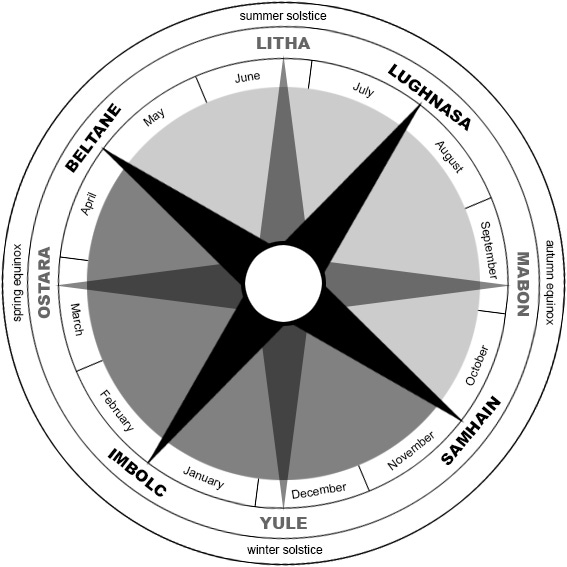As Thanksgiving approaches, it’s an opportunity to learn about holidays that occur during the autumn season around the world. Some may be familiar; others may not be so known. Do you know about these four autumn holidays?
Mabon
In late September, Wiccans and modern pagans celebrate Mabon, a holiday that marks the Autumn Equinox. As one of the sabbats of the Wheel of the Year, the Autumn Equinox marks the second harvest and the time to turn inward. Celebrants observe Mabon as a time for gratitude, balance, and preparation.
Aidan Kelly, a co-founder of the New Reformed Orthodox Order of the Golden Dawn, introduced Mabon to the Wheel of the Year in the 1970s. From Welsh mythology, Kelly chose the name Mabon from the Welsh god Mabon ap Modron. The Welsh god represented release, liberation, and balance.
One way to celebrate Mabon is to participate in a physical harvest and preserve the fruit and vegetables for winter. Another way celebrants honor the holiday is through rituals and meditation. Focused on balance, they reflect on the equal parts day and night of the Autumn Equinox. It also includes self-reflection on the balance in one’s life.
Ognissanti
Also known as All Saints’ Day, it is an Italian holiday that celebrates saints and loved ones who’ve passed away. In Italy, Ognissanti is a public holiday and a religious observance. Schools and businesses close for the day to allow celebrants to gather and honor their ancestors.
Historically, saints were celebrated individually on the anniversary of their martyrdom. As the numbers rose, Pope Gregory III designated November 1 a day for all saints in the eighth century. In the ninth century, Pope Gregory IV extended the celebration to the entire Catholic church.
Ognissanti is a day for remembrance of the dead and a reflection of life. In many Italian towns, families attend afternoon Mass preceded by a colorful procession. Families also visit their past loved ones in cemeteries, caring for their graves and leaving a bouquet of chrysanthemums.
Diwali
Diwali, the Festival of Lights, celebrates the victory of light over darkness, good over evil, and knowledge over ignorance. It falls between October and November; the dates change every year. The holiday follows the Hindu lunisolar calendar, which doesn’t follow the Gregorian calendar.
The holiday is a significant celebration for observers of Hinduism, Jainism, and Sikhism. While its story changes between faiths, its purpose stays the same: the triumph of good over evil. During Diwali, families come together to celebrate the festival. It’s a time to gather and feast, exchange gifts, and perform rituals that strengthen bonds.
People decorate their homes with rangoli designs created on the floor. Rangolis are made with colorful sand, rice, or flower petals. They bring good luck, prosperity to the house and family, and welcome guests. Homes adorned with lamps embody the festival’s hope and positivity.
St. Martin’s Day
On November 11, St. Martin’s Day commemorates the fourth-century Saint Martin of Tours. The saint is well known for cutting his cloak in half to share it with a beggar dying in the cold.
Also known as Martinmas, November 11 marks the day St. Martin is honored in Mass. It marks the natural shift to winter in the agricultural calendar. St. Martin of Tours was a Roman soldier before he left the military to become a monk under Saint Hilary of Poitiers. After some time, he became Bishop of Tours. St. Martin taught compassion and goodwill, symbolizing the strength of kindness.
During Martinmas, lantern-carrying children followed a man on horseback dressed as the saint. The children offered prayers and sang songs, often “Sankt Martin ritt durch Schnee und Wind” (“St. Martin Rode Through Snow and Wind”).


